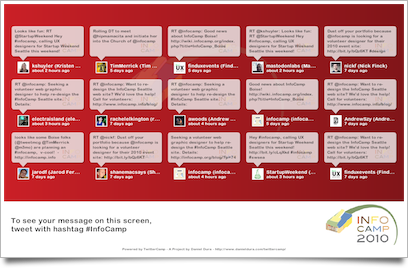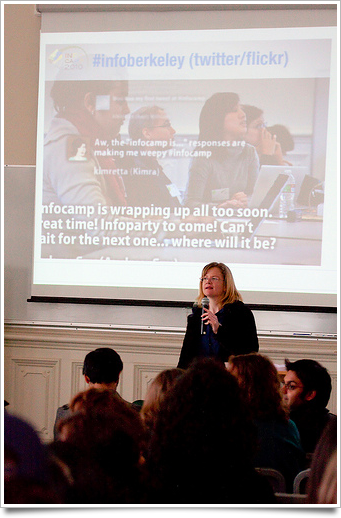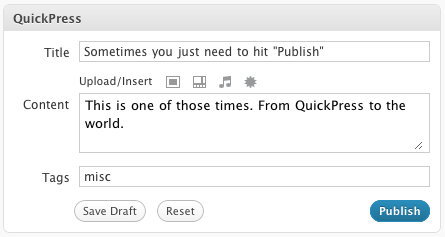
I was there when she opened her eyes for the first time. Her thick eyelids, once sealed in the womb against amniotic fluid, split slowly: a deep crack revealing dark irises within.
The first rays of light that ever struck her retina first bounced off my face. My face.
I was there because I was in the room for the emergency c-section the doctor ordered when her heartbeat dropped precipitously, disappeared from the monitor altogether, and returned, erratic, a signal of stress from unknown causes.
We were there because hours before, Olivia had awoken with uncontrollable shivering and an alarming fever. A seizure? Probably not. Dengue? No idea. We rushed to the hospital and it all began.
Midway through the surgery, the doctor called to me. I stood up from my station at Olivia’s head and looked down to see a new head sticking out of an abdominal split. It was Iris’s head, and it was covered in a combination of blood and a white substance that made it look extraterrestrial in origin.
It is a strange looking alien head, said my head.
She is my daughter, and she is beautiful, and she is alive!, said my heart, which in that moment expanded ten sizes to accommodate the torrent of feelings rushing though me.
I went with Iris to the natal intensive care unit for monitoring while they put eight layers of stitches into Olivia.
That was just two months ago.
Here is a list of things I felt three months ago:
- Kids are generally gross and annoying. (I love my nieces and nephews but I’m glad to hand them off to their parents for real life.)
- I will probably gag every time I have to change a diaper. (This I will do as seldom as possible.)
- I am in no way ready or qualified to parent another human being. (What do I know about that?)
- I am not ready to be known as a “parent”. (Being child-free is core to my identity, which includes freedom and youth. A child will mark me as old, responsible, tethered.)
- Perhaps most important: I resent the pending loss of freedom. (When will I read? When can I go out for coffee or beer, unmolested by the demands of someone infinitely dependent on me for life and health?)
These feelings were strong enough that the prospect of an early delivery was almost paralyzing. I was counting on those extra two weeks. Every day started and ended with a silent scream into my pillow to anyone listening: Don’t you dare rob me of this time. I’m not ready.
But that was then, and this is now. Here is a list of things I now feel:
- Other kids may be gross and annoying, but my daughter is the most perfect creature alive, and nothing she could do would be repellent.
- Diapers are merely an opportunity for scoring in the game of “baby tracking”. (We do this on our mobile phones. Play elements include changing diapers, feeding, tracking growth milestones, and more. Push notifications inform me of updates logged by Olivia. The recommended ratio of wet:poopy diapers is cause for celebration: her metabolism is on point, and her digestion is still working. Go baby Iris!)
- The practice of parenting has a learning curve, yes – but who doesn’t love learning new things? And, mercifully, the curve is shallow: an infant does not possess the capacity to max out my credit card, get arrested, or go on dates – much less roll over – and it seems quite possible to learn as you go.
- I don’t know anyone (yet) who has written me off for being a parent. But if they do, it’s their loss, not mine. Either we mutually adapt to new life situations or our friendship was never meant to last.
- The loss of freedom is real. “All joy and no fun” is one way I’ve heard parenting described, and I can see the truth in that. But adventure is still possible: so far we have fought back by putting 26,000 miles and four countries on her passport.
The transformation from reluctant father-to-be to smitten dad was sudden, almost violent. Before the birth, my one consolation was having had observed a similar transition occur with my brother. He, too, had been terrified of becoming a father – and he, too, experienced a point-of-view inversion wherein the source of terror became a source of joy. It was comforting to me to know that such a metamorphosis was possible, and uncanny to experience it firsthand.
How could such a change occur?
According to a recent estimate, one hundred and eight billion humans have lived in the world since humanity’s dawn. One hundred and eight billion people have lived and grown and survived on this pale blue dot we call earth. One of these, Iris, was recently born – and she is the most special and beautiful person I’ve ever laid eyes on.
Is Iris objectively special? Is she objectively beautiful? Setting aside the question of what “objectively” could even mean in this sense, the conclusion I’ve come to is that it simply doesn’t matter. The thing that’s special is in the relationship we have, the unspeakably complex dance of begetting and being born and coexisting as two interconnected beings.
I have spent most of my life as a steadfastly rational person. Emotions are, by definition, irrational and difficult to understand, much less control. So I try to understand. And there are some logical explanations for parental love.
Here’s one: as a concession to the benefits of walking upright and having large brains, human babies need to slip through the birth canal at an earlier stage of development than any other animal, before they possess any practical survival skills. The one thing they have going for them is a bewitching cuteness, which they use to manipulate adults into caring for them. From experience, this rings true.
Here is how I imagine it: fetal Iris is out on a deep-sea fishing expedition, with me as her prey. She sets her line in my path and waits. First ultrasound: I know this means danger, and I will have no part in it. Second ultrasound: That looks a little tasty, but I know better. Third-trimester kicking on Olivia’s belly: Let me just nibble that a bit. And then she comes out and to hell with it— I swallow the hook with abandon and feel its thousand barbs lodge throughout my whole being. It should be painful, I know. But it makes me happier than I have ever been.
More numbers.
Dunbar‘s number says we can only maintain stable social relationships with about 150 people at a time. We just can’t manage many more relationships than this. This says to me that we’re wired to value things on a small scale. In other words, it’s community that matters, not the general population.
And what about the dyad, that most exclusive of relationships? Somehow this, in my baby-addled brain, evokes quantum entanglement. A PhD in physics may be required to understand the phenomenon, and I don’t have one. But I do know that two particles can be directly connected to each other in a meaningful way over vast distances. Does it matter that there are one-hundred thousand quadrillion vigintillion atoms in the universe? Not to the two particles that are entangled with each other. Because they have each other. This is where reason and emotion crescendo together, saying: relationships matter. Relationship-ness is built into the fabric of matter itself! (Do I need more sleep or have I stumbled upon some profound cosmic truth?)
Following the convoluted analogy, I think I’m dangerously close to claiming that Iris has value because I love her, not because she’s objectively special. (What if she weren’t loved? Would she still have value?) I’m also coming close to circular reasoning: I love her because I value her, and I value her because I love her, and I have no control over that because of biological imperatives (or selfish genes, or Iris’s fishing expedition). And yet I don’t care, because this is the deep emotional truth that has embedded itself into my essence with its loving barbs.
When I was about to graduate college, I met with a friend to discuss the transition. I mentioned the comfort that being with Olivia provided me in the face of upcoming uncertainties of life. In retrospect, this strikes me as a sign of embarrassing naïveté: I was twenty one years old at the time, and had only started dating Olivia a couple months prior.
What did I know about life? For that matter, what do I now know about life?
And yet, all these years later, Olivia and I have brought Iris into the world. Quantum entanglement begets quantum entanglement. Biology wins; or, maybe, love or physics wins.
My fears used to be around attachment. Around being linked to another person in a way that would destroy my personal autonomy. Now I have bigger fears.
In honor of Iris’s birth, a friend shared a song from the musical Hamilton. I haven’t seen the musical, but the song, “Dear Theodosia”, expresses a longing for the future that never fails to move me to tears:
You will come of age with our young nation
We’ll bleed and fight for you
We’ll make it right for you
If we lay a strong enough foundation
We’ll pass it on to you
We’ll give the world to you and you’ll blow us all away
Someday
We desperately want to build a world worth passing on. And for centuries it’s been assumed that human society is slowly, surely becoming more free, egalitarian, and just. Now I’m not so sure. Fear and tribalism seem alive and well.
The funny thing about tribalism is that it’s based on a noble impulse that simply hasn’t gone far enough. Love of one’s kin and community is a good thing. The trouble is when we define our “tribe” and allow that boundary to mark the end of love and the beginning of fear.
Love is a complicated thing. But if I’ve learned anything over the past couple months, it’s that love – even, or perhaps especially, unexpected love – shatters boundaries, real and perceived.
Looking back at my rapid metamorphosis from reluctant individualist to smitten father, I’m struck at how it represents a radical expansion of my self. A small win for empathy in a world struggling to define the appropriate limits for such a concept.
I know this parenting thing will be difficult. I know I’m in the “honeymoon phase” of being a father, and that the years ahead will be full of challenges and pain. Some of these challenges will be the direct result of stupid and selfish things I do. And some of this pain will be the direct result of stupid and selfish things Iris will do.
And the questions may be even bigger than the challenges. Who is my “tribe” in a world with Iris? Do I hunker down, close in and call it “us against the world”? Or is there a way to let this newfound expansion of love extend into other relationships and interactions? What kind of world will we pass on to Iris and her peers? Oh, and lest we forget: how on earth does one raise a healthy, well-adjusted and empowered child?
I would never claim that parenting is the best way to love. But for me, becoming a parent has forced a new kind of love upon me. Iris’s strongest weapon – literally her only survival mechanism – is fostering connection. And no matter how strongly I fought it, I’m hooked.







